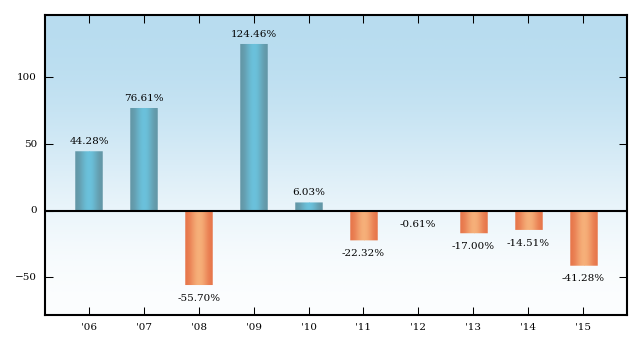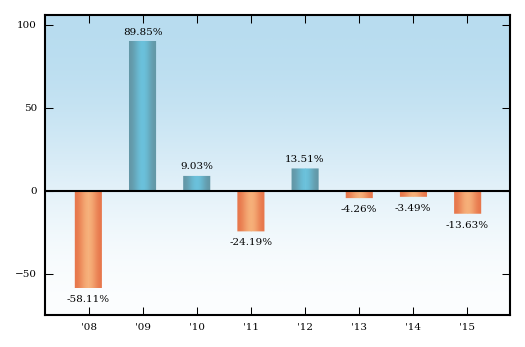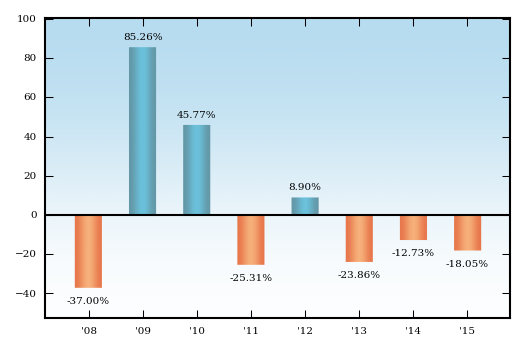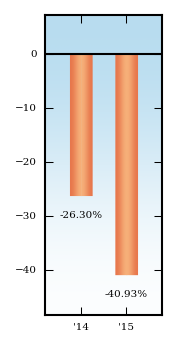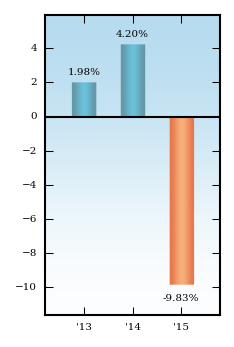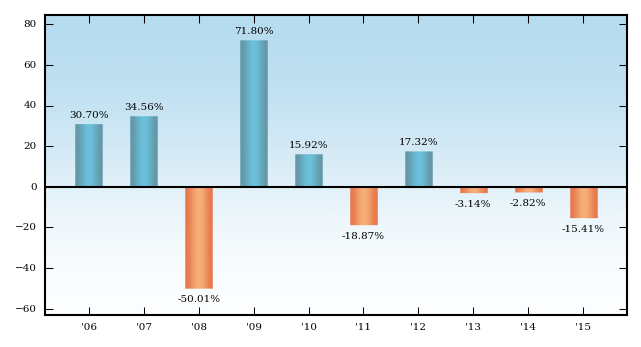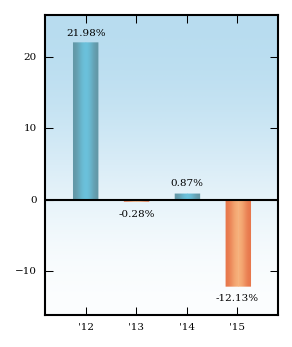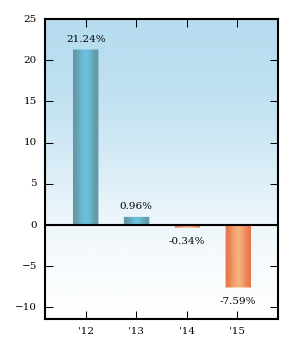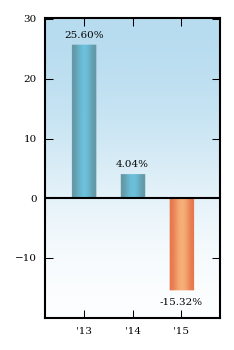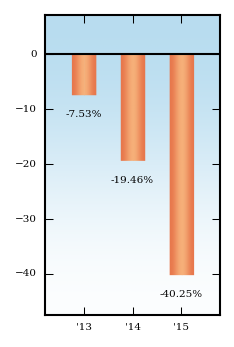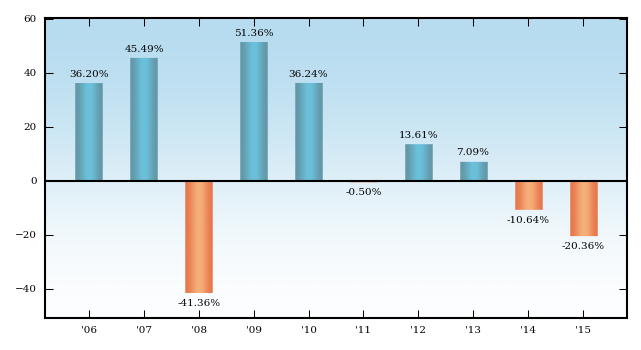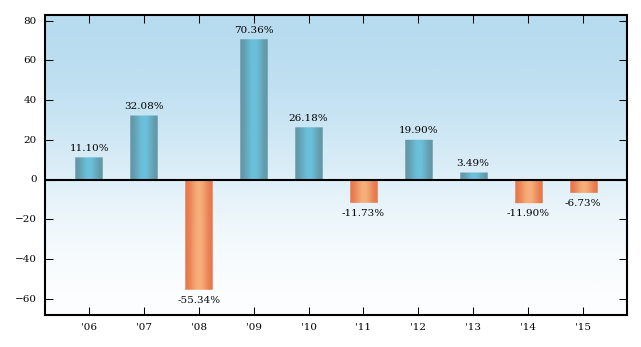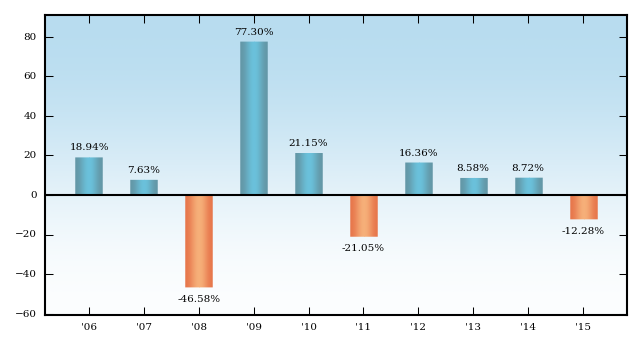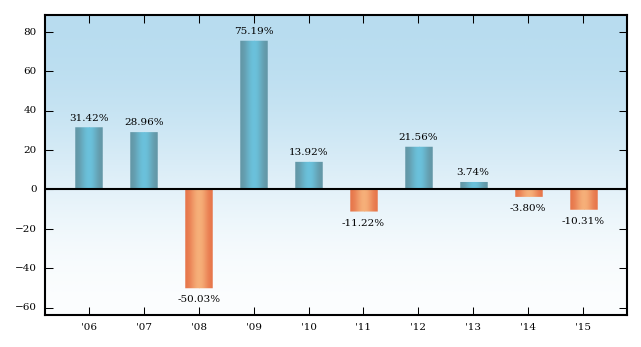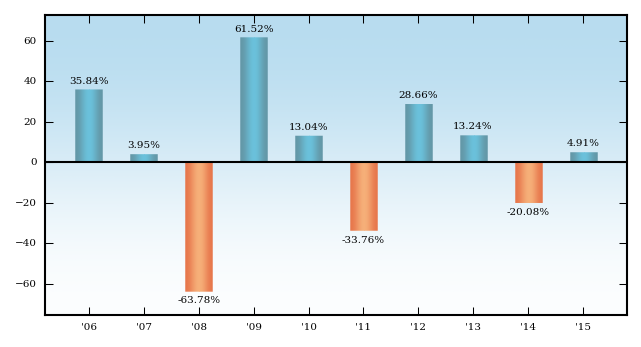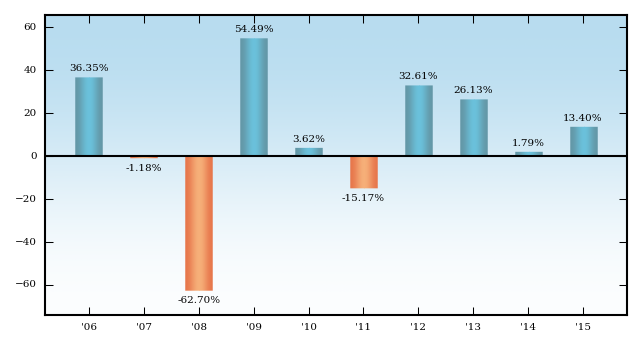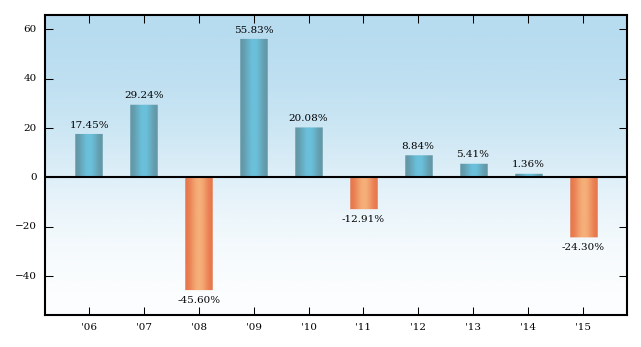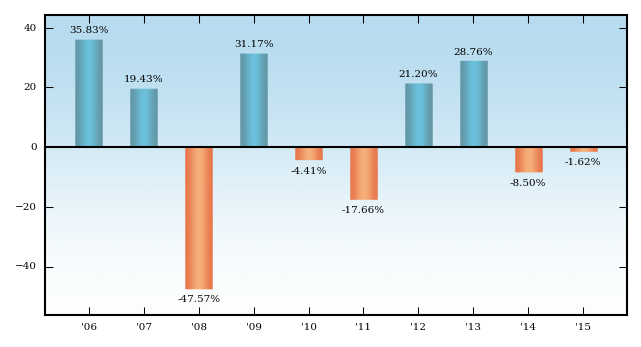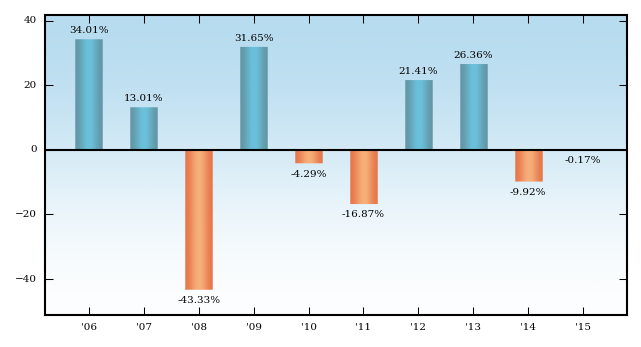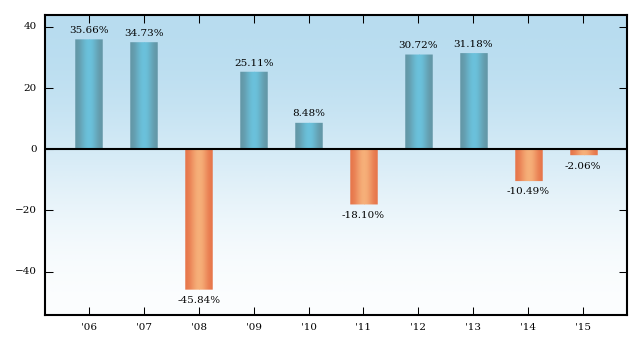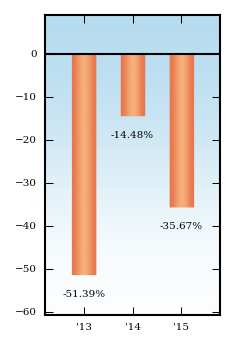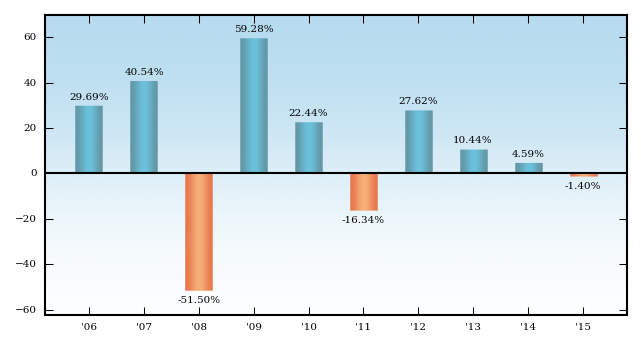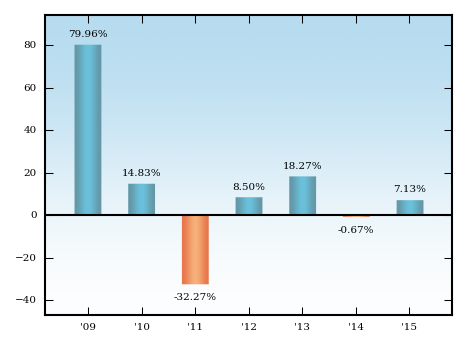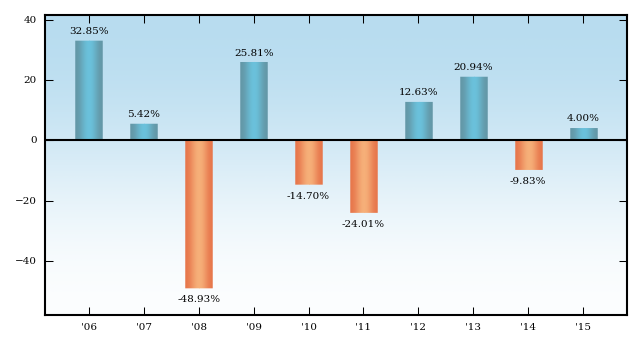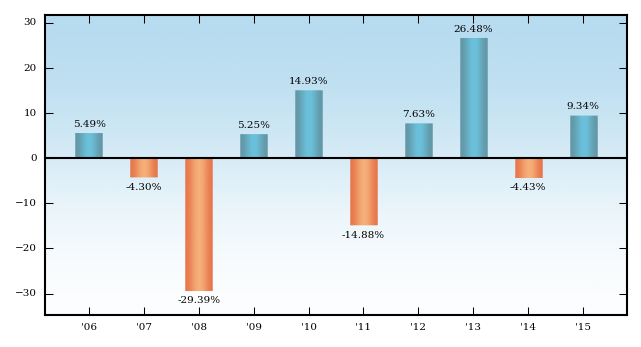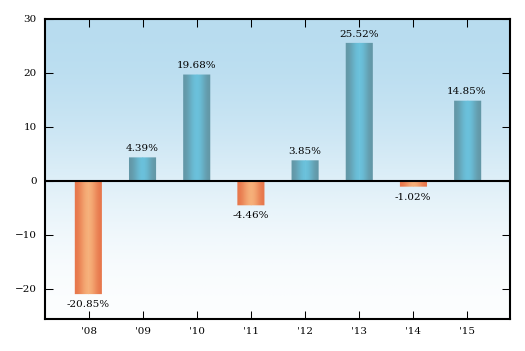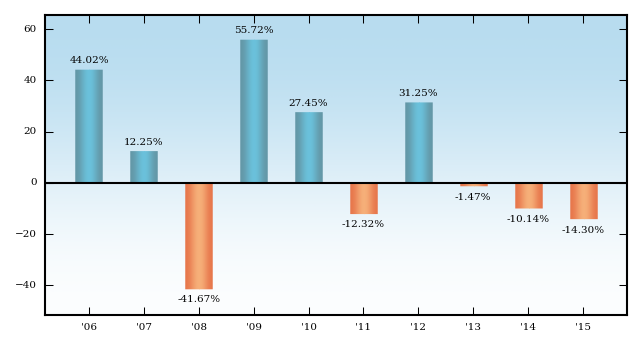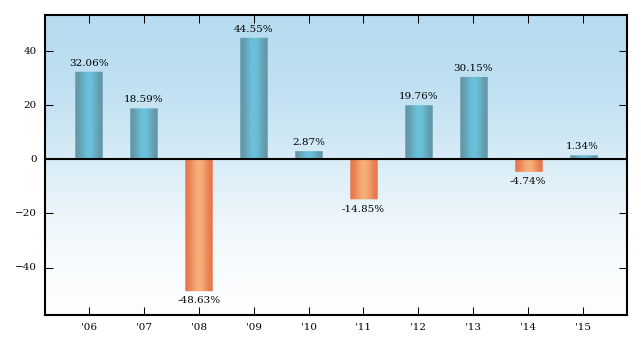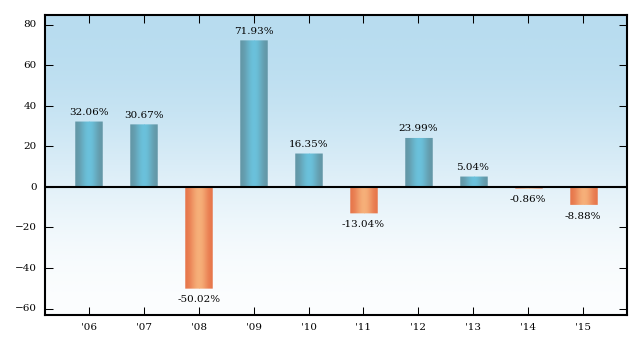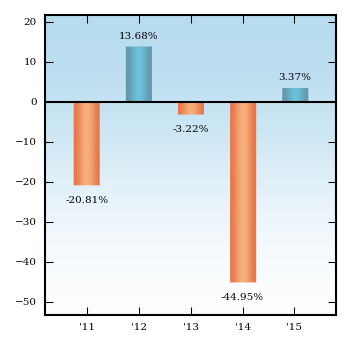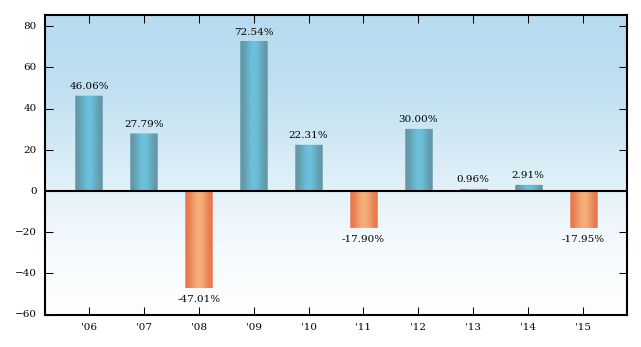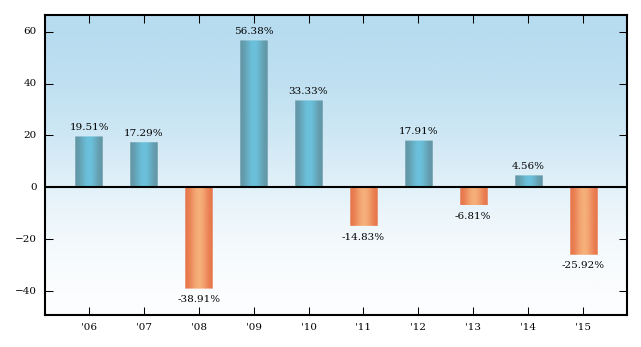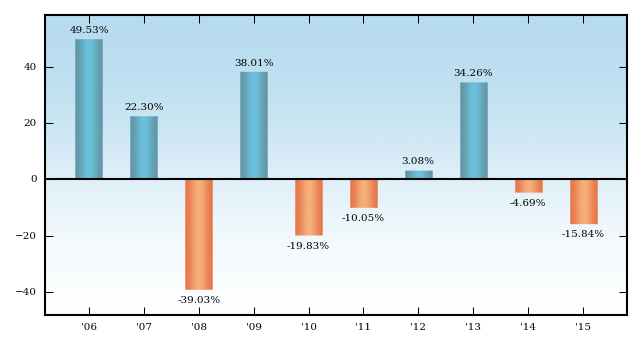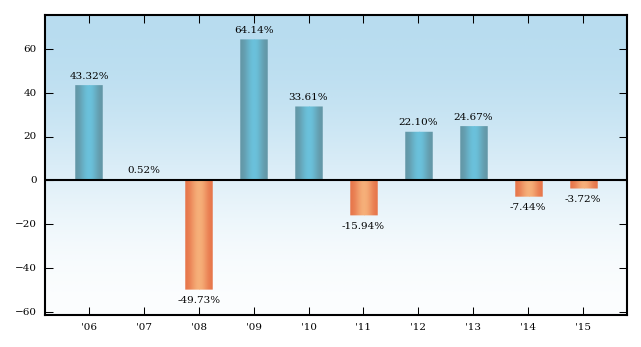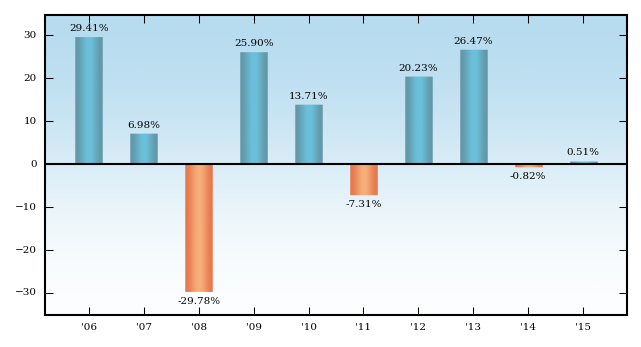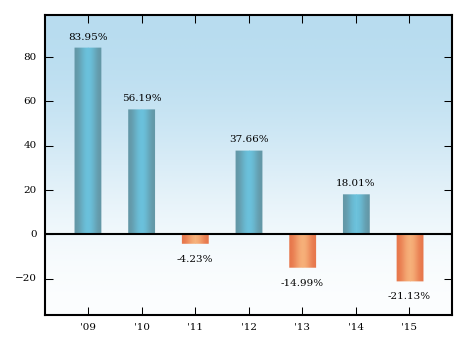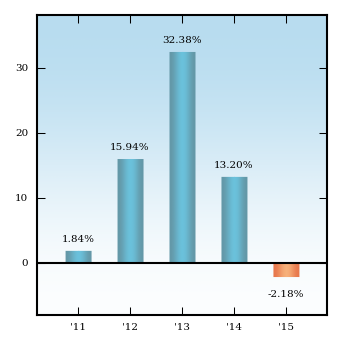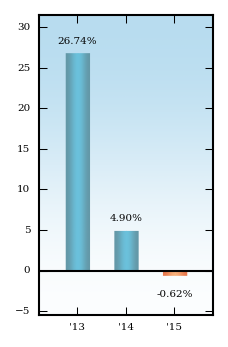| iShares Currency Hedged MSCI Emerging Markets ETF | |||||||||||||||||||||||||||
| iSHARES® CURRENCY HEDGED MSCI EMERGING MARKETS ETF Ticker: HEEM Stock Exchange: NYSE Arca | |||||||||||||||||||||||||||
| Investment Objective | |||||||||||||||||||||||||||
| The iShares Currency Hedged MSCI Emerging Markets ETF (the “Fund”) seeks to track the investment results of an index composed of large- and mid-capitalization emerging market equities while mitigating exposure to fluctuations between the value of the component currencies and the U.S. dollar. | |||||||||||||||||||||||||||
| Fees and Expenses | |||||||||||||||||||||||||||
| The following table describes the fees and expenses that you will incur if you own shares of the Fund. The investment advisory agreement between iShares, Inc. (the “Company”) and BlackRock Fund Advisors (“BFA”) (the “Investment Advisory Agreement”) provides that BFA will pay all operating expenses of the Fund, except interest expenses, taxes, brokerage expenses, distribution fees or expenses, and extraordinary expenses. The Fund may also pay “Acquired Fund Fees and Expenses.” Acquired Fund Fees and Expenses reflect the Fund's pro rata share of the fees and expenses incurred by investing in other investment companies. The impact of Acquired Fund Fees and Expenses is included in the total returns of the Fund. Acquired Fund Fees and Expenses are not used to calculate the Fund's net asset value per share (“NAV”) and are not included in the calculation of the ratio of expenses to average net assets shown in the Financial Highlights section of the Fund's prospectus (the “Prospectus”). BFA, the investment adviser to the Fund, has contractually agreed to reduce the management fee so that the management fee is equal to the Acquired Fund Fees and Expenses that would have been experienced by the Fund related to its investment in the iShares MSCI Emerging Markets ETF (“EEM” or the “Underlying Fund”), after taking into account any fee waivers by EEM through December 31, 2020. The contractual waiver may be terminated prior to December 31, 2020 only upon written agreement of the Company and BFA. You may also incur usual and customary brokerage commissions and other charges when buying or selling shares of the Fund, which are not reflected in the Example that follows: | |||||||||||||||||||||||||||
| Annual Fund Operating Expenses (ongoing expenses that you pay each year as a percentage of the value of your investments) | |||||||||||||||||||||||||||
| |||||||||||||||||||||||||||
| Example. | |||||||||||||||||||||||||||
| This Example is intended to help you compare the cost of owning shares of the Fund with the cost of investing in other funds. The Example assumes that you invest $10,000 in the Fund for the time periods indicated and then sell all of your shares at the end of those periods. The Example also assumes that your investment has a 5% return each year and that the Fund’s operating expenses remain the same. Although your actual costs may be higher or lower, based on these assumptions, your costs would be: | |||||||||||||||||||||||||||
| |||||||||||||||||||||||||||
| Portfolio Turnover. | |||||||||||||||||||||||||||
| The Fund and the Underlying Fund in which the Fund principally invests, the iShares MSCI Emerging Markets ETF, may pay transaction costs, such as commissions, when they buy and sell securities (or “turn over” their portfolios). A higher portfolio turnover rate for the Fund or the Underlying Fund may indicate higher transaction costs and cause the Fund or the Underlying Fund to incur increased expenses. These expenses, which are not reflected in Annual Fund Operating Expenses or in the Example (except costs to the Underlying Fund included as part of Acquired Fund Fees and Expenses), affect the Fund's performance. During the most recent fiscal year, the Fund's portfolio turnover rate was 11% of the average value of its portfolio. To the extent the Underlying Fund incurs costs from high portfolio turnover, such costs may have a negative effect on the performance of the Fund. | |||||||||||||||||||||||||||
| Principal Investment Strategies | |||||||||||||||||||||||||||
| The Fund seeks to track the investment results of the MSCI Emerging Markets 100% Hedged to USD Index (the “Underlying Index”), which has been developed by MSCI Inc. (the “Index Provider” or “MSCI”) as an equity benchmark for global emerging markets stock performance with the currency risk inherent in the securities included in the Underlying Index hedged to the U.S. dollar on a monthly basis. As of June 30, 2016, the Underlying Index consisted of securities from the following 23 emerging market countries: Brazil, Chile, China, Colombia, the Czech Republic, Egypt, Greece, Hungary, India, Indonesia, Malaysia, Mexico, Peru, the Philippines, Poland, Qatar, Russia, South Africa, South Korea, Taiwan, Thailand, Turkey and the United Arab Emirates. The Underlying Index may include large- and mid-capitalization companies. Components of the Underlying Index primarily include consumer discretionary, financials and information technology companies. The components of the Underlying Index, and the degree to which these components represent certain industries, are likely to change over time. Currently, the Fund achieves its investment objective by investing a substantial portion of its assets in the Underlying Fund. BFA uses a “passive” or indexing approach to try to achieve the Fund’s investment objective. Unlike many investment companies, the Fund does not try to “beat” the index it tracks and does not seek temporary defensive positions when markets decline or appear overvalued. Indexing may eliminate the chance that the Fund will substantially outperform the Underlying Index but also may reduce some of the risks of active management, such as poor security selection. Indexing seeks to achieve lower costs and better after-tax performance by keeping portfolio turnover low in comparison to actively managed investment companies. BFA uses a representative sampling indexing strategy to manage the Fund and the Underlying Fund. “Representative sampling” is an indexing strategy that involves investing in a representative sample of securities or other instruments comprising an applicable underlying index. The securities selected are expected to have, in the aggregate, investment characteristics (based on factors such as market capitalization and industry weightings), fundamental characteristics (such as return variability and yield) and liquidity measures similar to those of an applicable underlying index. The Fund and the Underlying Fund may or may not hold all of the securities and other components of an applicable underlying index. The Fund generally will invest at least 90% of its assets in the component securities (including indirect investments through the Underlying Fund) and other instruments of the Underlying Index and in investments that have economic characteristics that are substantially identical to the component securities of the Underlying Index (i.e., depositary receipts representing securities of the Underlying Index) and may invest up to 10% of its assets in certain futures, options and swap contracts, cash and cash equivalents, including shares of money market funds advised by BFA or its affiliates, as well as in securities not included in the Underlying Index, but which BFA believes will help the Fund track the Underlying Index. Components of the Underlying Index include equity securities and foreign currency forward contracts (both deliverable and non-deliverable) designed to hedge non-U.S. currency fluctuations against the U.S. dollar. The notional exposure to foreign currency forward contracts (both deliverable and non-deliverable) generally will be a short position that hedges the currency risk of the equity portfolio. The Fund seeks to track the investment results of the Underlying Index before fees and expenses of the Fund. The Underlying Index sells forward the total value of the non-U.S. dollar denominated securities included in the Underlying Index at a one-month forward rate to effectively create a “hedge” against fluctuations in the relative value of the component currencies in relation to the U.S. dollar. The hedge is reset on a monthly basis. The Underlying Index is designed to have higher returns than an equivalent unhedged investment when the component currencies are weakening relative to the U.S. dollar and appreciation in some of the component currencies does not exceed the aggregate depreciation of the others. Conversely, the Underlying Index is designed to have lower returns than an equivalent unhedged investment when the component currencies are rising relative to the U.S. dollar. In order to replicate the “hedging” component of the Underlying Index, the Fund intends to enter into foreign currency forward contracts designed to offset the Fund’s exposure to the component currencies. A foreign currency forward contract is a contract between two parties to buy or sell a specified amount of a specific currency in the future at an agreed-upon exchange rate. The Fund's exposure to foreign currency forward contracts is based on the aggregate exposure of the Fund to the component currencies. While this approach is designed to minimize the impact of currency fluctuations on Fund returns, it does not necessarily eliminate the Fund’s exposure to the component currencies. The return of the foreign currency forward contracts may not perfectly offset the actual fluctuations between the component currencies and the U.S. dollar. The Fund may also use non-deliverable forward (“NDF”) contracts to execute its hedging transactions. An NDF is a contract where there is no physical settlement of two currencies at maturity. Rather, based on the movement of the currencies and the contractually agreed-upon exchange rate, a net cash settlement will be made by one party to the other in U.S. dollars. The Fund may lend securities representing up to one-third of the value of the Fund's total assets (including the value of any collateral received). The Underlying Index is sponsored by MSCI, which is independent of the Fund and BFA. The Index Provider determines the composition and relative weightings of the securities and currency forwards in the Underlying Index and publishes information regarding the market value of the Underlying Index. Industry Concentration Policy. The Fund will concentrate its investments (i.e., hold 25% or more of its total assets) in a particular industry or group of industries to approximately the same extent that the Underlying Index is concentrated. For purposes of this limitation, securities of the U.S. government (including its agencies and instrumentalities) and repurchase agreements collateralized by U.S. government securities are not considered to be issued by members of any industry. | |||||||||||||||||||||||||||
| Summary of Principal Risks | |||||||||||||||||||||||||||
| As with any investment, you could lose all or part of your investment in the Fund, and the Fund's performance could trail that of other investments. The Fund is subject to certain risks, including the principal risks noted below (either directly or through its investments in the Underlying Fund), any of which may adversely affect the Fund's NAV, trading price, yield, total return and ability to meet its investment objective. Asset Class Risk. Securities and other assets in the Underlying Index or in the Fund's or the Underlying Fund's portfolio may underperform in comparison to the general financial markets, a particular financial market or other asset classes. Assets Under Management (AUM) Risk. From time to time an Authorized Participant (as defined in the Creations and Redemptions section of the Prospectus), a third party investor, the Fund’s adviser or an affiliate of the Fund’s adviser, or the Fund may invest in the Fund and hold its investment for a specific period of time in order to facilitate commencement of the Fund’s operations or for the Fund to achieve size or scale. There can be no assurance that any such entity would not redeem its investment or that the size of the Fund would be maintained at such levels, which could negatively impact the Fund. Authorized Participant Concentration Risk. Only an Authorized Participant may engage in creation or redemption transactions directly with the Fund. The Fund has a limited number of institutions that may act as Authorized Participants on an agency basis (i.e., on behalf of other market participants). To the extent that Authorized Participants exit the business or are unable to proceed with creation and/or redemption orders with respect to the Fund and no other Authorized Participant is able to step forward to create or redeem Creation Units (as defined in the Purchase and Sale of Fund Shares section of the Prospectus), Fund shares may be more likely to trade at a premium or discount to NAV and possibly face trading halts and/or delisting. The Authorized Participant concentration risk may be heightened on the Fund for exchange-traded funds (“ETFs”) that invest in non-U.S. securities or other securities or instruments that are less widely traded. Commodity Risk. The Fund and the Underlying Fund may invest in companies that are susceptible to fluctuations in certain commodity markets. Any negative changes in commodity markets that may be due to changes in supply and demand for commodities, market events, regulatory developments or other factors that the Fund cannot control could have an adverse impact on those companies. Concentration Risk. The Fund may be susceptible to an increased risk of loss, including losses due to adverse events that affect the Fund’s investments more than the market as a whole, to the extent that the Fund's or the Underlying Fund's investments are concentrated in the securities of a particular issuer or issuers, country, group of countries, region, market, industry, group of industries, sector or asset class. Consumer Discretionary Sector Risk. The consumer discretionary sector may be affected by changes in domestic and international economies, exchange and interest rates, competition, consumers' disposable income, consumer preferences, social trends and marketing campaigns. Currency Hedging Risk. When a derivative is used as a hedge against a position that the Fund holds, any loss generated by the derivative generally should be substantially offset by gains on the hedged investment, and vice versa. While hedging can reduce or eliminate losses, it can also reduce or eliminate gains. Hedges are sometimes subject to imperfect matching between the derivative and its reference asset, and there can be no assurance that the Fund’s hedging transactions will be effective. In seeking to track the performance of the Underlying Index, the Fund will attempt to hedge the currency exposure of non-U.S. dollar denominated securities held in its portfolio (held directly or indirectly through its investment in the Underlying Fund) by investing in foreign currency forward contracts, which may include both physically-settled forward contracts and NDFs. NDFs may be less liquid than deliverable forward currency contracts. A lack of liquidity in NDFs of the hedged currency could result in the Fund being unable to structure its hedging transactions as intended. In addition, BFA may seek to limit the size of the Fund in order to attempt to reduce the likelihood of a situation where the Fund is unable to obtain sufficient liquidity in an underlying currency hedge to implement its investment objective. Foreign currency forward contracts, including NDFs, do not eliminate movements in the value of non-U.S. currencies and securities but rather allow the Fund to establish a fixed rate of exchange for a future point in time. Exchange rates may be volatile and may change quickly and unpredictably in response to both global economic developments and economic conditions in a geographic region in which the Fund or the Underlying Fund invests. In addition, in order to minimize transaction costs, or for other reasons, the Fund’s exposure to the component currencies may not be fully hedged at all times. At certain times, the Fund may use an optimized hedging strategy and will hedge a smaller number of component currencies to reduce hedging costs. In addition, because the Fund’s currency hedge is reset on a monthly basis, currency risk can develop or increase intra-month. Furthermore, while the Fund is designed to hedge against currency fluctuations, it is possible that a degree of currency exposure may remain even at the time a hedging transaction is implemented. As a result, the Fund may not be able to structure its hedging transactions as anticipated or its hedging transactions may not successfully reduce the currency risk included in the Fund’s portfolio. The effectiveness of the Fund’s currency hedging strategy will in general be affected by the volatility of both the Underlying Index and the volatility of the U.S. dollar relative to the currencies to be hedged, measured on an aggregate basis. Increased volatility in either or both the Underlying Index and the U.S. dollar relative to the currencies to be hedged will generally reduce the effectiveness of the Fund’s currency hedging strategy. In addition, volatility in one or more of the currencies may offset stability in another currency and reduce the overall effectiveness of the hedges. The effectiveness of the Fund’s currency hedging strategy may also in general be affected by interest rates. Significant differences between U.S. dollar interest rates and some or all of the applicable foreign currency interest rates may impact the effectiveness of the Fund’s currency hedging strategy. Currency hedging activity exposes the Fund to credit risk due to counterparty exposure. This risk will be higher to the extent that the Fund trades with a single counterparty or small number of counterparties. Currency Risk. Because the Fund's and the Underlying Fund's NAVs are determined in U.S. dollars, the Fund's NAV could decline if the currency of one or more of the non-U.S. markets in which the Fund or the Underlying Fund invests depreciates against the U.S. dollar and the depreciation of one currency is not offset by appreciation in another currency and/or the Fund's attempt to hedge currency exposure to the depreciating currency or currencies is unsuccessful. Generally, an increase in the value of the U.S. dollar against a foreign currency will reduce the value of a security denominated in that foreign currency. In addition, fluctuations in the exchange rates of currencies could affect the economy or particular business operations of companies in a geographic region, including securities in which the Fund or the Underlying Fund invests, causing an adverse impact on the Fund’s or the Underlying Fund’s investments in the affected region and the United States. As a result, investors have the potential for losses regardless of the length of time they intend to hold Fund shares. Currency exchange rates can be very volatile and can change quickly and unpredictably. As a result, the Fund's NAV may change quickly and without warning. Custody Risk. Less developed securities markets are more likely than more developed securities markets to experience problems with the clearing and settling of trades, as well as the holding of securities by local banks, agents and depositories. Cyber Security Risk. Failures or breaches of the electronic systems of the Fund and the Underlying Fund, the Fund's and the Underlying Fund's adviser, the Fund's and the Underlying Fund's distributor, and the Fund's and the Underlying Fund's other service providers, market makers, Authorized Participants, hedging counterparties to the Fund or the issuers of securities in which the Fund or the Underlying Fund invests have the ability to cause disruptions and negatively impact the Fund’s business operations, potentially resulting in financial losses to the Fund and its shareholders. While the Fund has established business continuity plans and risk management systems seeking to address system breaches or failures, there are inherent limitations in such plans and systems. Furthermore, the Fund cannot control the cyber security plans and systems of the Fund’s service providers, the Index Provider, market makers, Authorized Participants, hedging counterparties to the Fund or issuers of securities in which the Fund or the Underlying Fund invests. Derivatives Risk. The Fund will use currency forwards and NDFs to hedge the currency exposure resulting from investments in the foreign currency-denominated securities held by the Fund and the Underlying Fund. The Fund’s use of these instruments, like investments in other derivatives, may reduce the Fund’s returns, increase volatility and/or result in losses due to credit risk or ineffective hedging strategies. Volatility is defined as the characteristic of a security, a currency, an index or a market, to fluctuate significantly in price within a defined time period. Currency forwards, like other derivatives, are also subject to counterparty risk, which is the risk that the other party in the transaction will not fulfill its contractual obligation. A risk of the Fund’s use of derivatives is that the fluctuations in their values may not correlate perfectly with the value of the currency or currencies being hedged as compared to that of the U.S. dollar. The possible lack of a liquid secondary market for derivatives and the resulting inability of the Fund to sell or otherwise close a derivatives position could expose the Fund to losses and could make derivatives more difficult for the Fund to value accurately. The Fund could also suffer losses related to its derivatives positions as a result of unanticipated market movements, which losses are potentially unlimited. BFA’s use of derivatives is not intended to predict the direction of securities prices, currency exchange rates, interest rates and other economic factors, which could cause the Fund’s derivatives positions to lose value. Derivatives may give rise to a form of leverage and may expose the Fund to greater risk and increase its costs. The U.S. and certain other countries have adopted or are in the process of adopting regulatory reforms affecting the derivatives markets. These regulations may make derivatives more costly, may limit the availability of derivatives, and may otherwise adversely affect the value and performance of derivatives. Equity Securities Risk. Equity securities are subject to changes in value, and their values may be more volatile than those of other asset classes. Holders of common stock generally are subject to more risks than holders of preferred stock and debt securities because the right to repayment of common stockholders’ claims is subordinated to that of holders of preferred stock and debt securities upon the bankruptcy of the issuer. Financials Sector Risk. Performance of companies in the financials sector may be adversely impacted by many factors, including, among others, government regulations, economic conditions, credit rating downgrades, changes in interest rates, and decreased liquidity in credit markets. The impact of more stringent capital requirements, recent or future regulation of any individual financial company, or recent or future regulation of the financials sector as a whole cannot be predicted. In recent years, cyber attacks and technology malfunctions and failures have become increasingly frequent in this sector and have caused significant losses to companies in this sector, which may negatively impact the Fund. Geographic Risk. A natural or other disaster could occur in a geographic region in which the Fund or the Underlying Fund invests, which could adversely affect the economy or the business operations of companies in the specific geographic region, causing an adverse impact on the Fund's or the Underlying Fund's investments in the affected region. Index-Related Risk. There is no guarantee that the Fund will achieve a high degree of correlation to the Underlying Index and therefore achieve its investment objective. Market disruptions and regulatory restrictions could have an adverse effect on the Fund’s ability to adjust its exposure to the required levels in order to track the Underlying Index. Errors in index data, index computations and/or the construction of the Underlying Index in accordance with its methodology may occur from time to time and may not be identified and corrected by the Index Provider for a period of time or at all, which may have an adverse impact on the Fund and its shareholders. Information Technology Sector Risk. Information technology companies face intense competition and potentially rapid product obsolescence. They are also heavily dependent on intellectual property rights and may be adversely affected by the loss or impairment of those rights. Investment in Underlying Fund Risk. The Fund expects to invest a substantial portion of its assets in the Underlying Fund, so the Fund’s investment performance is likely to be directly related to the performance of the Underlying Fund. The Fund’s NAV will change with changes in the value of the Underlying Fund and other instruments in which the Fund invests based on their market valuations. An investment in the Fund will entail more costs and expenses than a direct investment in the Underlying Fund, including as a result of the currency hedging activity conducted by the Fund. As the Fund’s allocation to the Underlying Fund changes from time to time, or to the extent that the expense ratio of the Underlying Fund changes, the weighted average operating expenses borne by the Fund may increase or decrease. Issuer Risk. The performance of the Fund depends on the performance of individual securities and other instruments to which the Fund and the Underlying Fund have exposure. Changes in the financial condition or credit rating of an issuer of those securities or counterparty on other instruments may cause the value of the securities or instruments to decline. Large-Capitalization Companies Risk. Large-capitalization companies may be less able than smaller capitalization companies to adapt to changing market conditions. Large-capitalization companies may be more mature and subject to more limited growth potential compared with smaller capitalization companies. During different market cycles, the performance of large-capitalization companies has trailed the overall performance of the broader securities markets. Management Risk. As the Fund may not fully replicate the Underlying Index, it is subject to the risk that BFA's investment strategy may not produce the intended results. Market Risk. The Fund and the Underlying Fund could lose money over short periods due to short-term market movements and over longer periods during more prolonged market downturns. Market Trading Risk. The Fund and the Underlying Fund face numerous market trading risks, including the potential lack of an active market for their shares, losses from trading in secondary markets, losses due to ineffective currency hedges, periods of high volatility and disruptions in the creation/redemption process. ANY OF THESE FACTORS, AMONG OTHERS, MAY LEAD TO THE FUND'S SHARES TRADING AT A PREMIUM OR DISCOUNT TO NAV. Mid-Capitalization Companies Risk. Compared to large-capitalization companies, mid-capitalization companies may be less stable and more susceptible to adverse developments, and their securities may be more volatile and less liquid. National Closed Market Trading Risk. To the extent that the underlying securities held by the Fund or the Underlying Fund trade on foreign exchanges that may be closed when the securities exchange on which the Fund’s or the Underlying Fund's shares trade is open, there are likely to be deviations between the current price of such an underlying security and the last quoted price for the underlying security (i.e., the Fund’s quote from the closed foreign market). These deviations could result in premiums or discounts to the Fund’s NAV that may be greater than those experienced by other ETFs. Non-Diversification Risk. The Fund may invest a large percentage of its assets in securities issued by or representing a small number of issuers. As a result, the Fund's performance may depend on the performance of a small number of issuers. Non-U.S. Securities Risk. Investments in the securities of non-U.S. issuers are subject to the risks associated with investing in those non-U.S. markets, such as heightened risks of inflation or nationalization. The Fund or the Underlying Fund may lose money due to political, economic and geographic events affecting issuers of non-U.S. securities or non-U.S. markets. In addition, non-U.S. securities markets may trade a small number of securities and may be unable to respond effectively to increases in trading volume, potentially making prompt liquidation of holdings difficult or impossible at times. The Fund and the Underlying Fund are specifically exposed to Asian Economic Risk. Operational Risk. The Fund and the Underlying Fund are exposed to operational risks arising from a number of factors, including, but not limited to, human error, processing and communication errors, errors of the Fund’s and the Underlying Fund's service providers, counterparties or other third-parties, failed or inadequate processes and technology or systems failures. The Fund, the Underlying Fund and BFA seek to reduce these operational risks through controls and procedures. However, these measures do not address every possible risk and may be inadequate to address these risks. Passive Investment Risk. The Fund and the Underlying Fund are not actively managed and BFA generally does not attempt to take defensive positions under any market conditions, including declining markets. Privatization Risk. Some countries in which the Fund or the Underlying Fund invests have privatized, or have begun the process of privatizing, certain entities and industries. Privatized entities may lose money or be re-nationalized. Reliance on Trading Partners Risk. The Fund and the Underlying Fund invest in countries or regions whose economies are heavily dependent upon trading with key partners. Any reduction in this trading may have an adverse impact on the Fund's investments. Through its portfolio companies' trading partners, the Fund and the Underlying Fund are specifically exposed to Asian Economic Risk, European Economic Risk and U.S. Economic Risk. Risk of Investing in China. Investments in Chinese issuers subject the Fund or the Underlying Fund to risks specific to China. Investments in certain Hong Kong-listed securities may also subject the Fund or the Underlying Fund to exposure to Chinese companies. China may be subject to considerable degrees of economic, political and social instability. China is an emerging market and demonstrates significantly higher volatility from time to time in comparison to developed markets. Over the last few decades, the Chinese government has undertaken reform of economic and market practices and has expanded the sphere of private ownership of property in China. However, Chinese markets generally continue to experience inefficiency, volatility and pricing anomalies resulting from governmental influence, a lack of publicly available information and/or political and social instability. Internal social unrest or confrontations with other neighboring countries, including military conflicts in response to such events, may also disrupt economic development in China and result in a greater risk of currency fluctuations, currency non-convertibility, interest rate fluctuations and higher rates of inflation. Export growth continues to be a major driver of China's rapid economic growth. Reduction in spending on Chinese products and services, institution of tariffs or other trade barriers, or a downturn in any of the economies of China's key trading partners may have an adverse impact on the Chinese economy. Risk of Investing in Emerging Markets. The Fund's or the Underlying Fund's investments in emerging market issuers may be subject to a greater risk of loss than investments in issuers located or operating in more developed markets. Emerging markets may be more likely to experience inflation, political turmoil and rapid changes in economic conditions than more developed markets. Emerging markets often have less uniformity in accounting and reporting requirements, less reliable securities valuations and greater risk associated with custody of securities than developed markets. Risk of Investing in Russia. Investing in Russian securities involves significant risks, including legal, regulatory and economic risks that are specific to Russia. In addition, investing in Russian securities involves risks associated with the settlement of portfolio transactions and loss of the Fund’s ownership rights in its portfolio securities as a result of the system of share registration and custody in Russia. A number of countries have imposed economic sanctions on certain Russian individuals and Russian corporate entities. These sanctions, or even the threat of further sanctions, may adversely affect Russia’s economy and the Fund’s investments. Securities Lending Risk. The Fund and the Underlying Fund may engage in securities lending. Securities lending involves the risk that the Fund and the Underlying Fund may lose money because the borrower of the loaned securities fails to return the securities in a timely manner or at all. The Fund and the Underlying Fund could also lose money in the event of a decline in the value of collateral provided for loaned securities or a decline in the value of any investments made with cash collateral. These events could also trigger adverse tax consequences for the Fund. Security Risk. Some countries and regions in which the Fund and the Underlying Fund invest have experienced security concerns, such as terrorism and strained international relations. Incidents involving a country's or region's security may cause uncertainty in these markets and may adversely affect their economies and the Fund's and the Underlying Fund's investments. Structural Risk. The countries in which the Fund and the Underlying Fund invests may be subject to considerable degrees of economic, political and social instability. Tax Risk. Because the Fund is expected to invest in the Underlying Fund, the Fund’s realized losses on sales of shares of the Underlying Fund may be indefinitely or permanently deferred as “wash sales.” Distributions of short-term capital gains by the Underlying Fund will be recognized as ordinary income by the Fund and would not be offset by the Fund’s capital loss carryforwards, if any. Capital loss carryforwards of the Underlying Fund, if any, would not offset net capital gains of the Fund. Each of these effects is caused by the Fund’s investment in the Underlying Fund and may result in distributions to Fund shareholders being of higher magnitude and less likely to qualify for lower capital gain tax rates than if the Fund were to invest directly in the securities and other instruments comprising the Underlying Index. The Fund invests in derivatives. The federal income tax treatment of a derivative may not be as favorable as a direct investment in an underlying asset. Derivatives may produce taxable income and taxable realized gain. Derivatives may adversely affect the timing, character and amount of income the Fund realizes from its investments. As a result, a larger portion of the Fund’s distributions may be treated as ordinary income rather than as capital gains. In addition, certain derivatives are subject to mark-to-market or straddle provisions of the Internal Revenue Code of 1986, as amended (the “Internal Revenue Code”). If such provisions are applicable, there could be an increase (or decrease) in the amount of taxable dividends paid by the Fund. Income from swaps is generally taxable. In addition, the tax treatment of certain derivatives, such as swaps, is unsettled and may be subject to future legislation, regulation or administrative pronouncements issued by the U.S. Internal Revenue Service (“IRS”). Tracking Error Risk. Tracking error is the divergence of the Fund’s performance from that of the Underlying Index. Tracking error may occur because of differences between the securities (including shares of the Underlying Fund) and other instruments held in the Fund’s portfolio and those included in the Underlying Index, pricing differences (including differences between a security’s price at the local market close and the Fund’s valuation of a security at the time of calculation of the Fund’s NAV), differences in transaction and hedging costs and forward rates achieved, the Fund’s holding of uninvested cash, differences in timing of the accrual of or the valuation of dividends or other distributions, interest, tax gains or losses, changes to the Underlying Index and the cost to the Fund of complying with various new or existing regulatory requirements. These risks may be heightened during times of increased market volatility or other unusual market conditions in the affected securities and/or foreign exchange markets. In addition, tracking error may result because the Fund incurs fees and expenses, while the Underlying Index does not, and because the Fund accepts creations and redemptions during time periods between which it is able to adjust its currency hedges, whereas the Underlying Index does not adjust its hedging during these periods. To the extent that the Fund seeks its investment objective through investments in the Underlying Fund, the Fund may experience increased tracking error. The potential for increased tracking error may result from investments in the Underlying Fund due to, among other things, differences in the composition of the investment portfolio of the Underlying Fund as compared to the index tracked by the Underlying Fund and differences in the timing of the Fund’s valuation of: (i) the Underlying Fund and the foreign currency forward contracts (each valued as of the close of the New York Stock Exchange (“NYSE”), typically 4:00 p.m., Eastern Time), (ii) the valuation of the securities in the Underlying Index (generally valued as of each security’s local market close) and (iii) the foreign currency forward contracts included in the Underlying Index (generally valued at 4:00 p.m., London time). Valuation Risk. The price the Fund and the Underlying Fund could receive upon sale of a security or unwind of a financial instrument or other asset may differ from the Fund's valuation of the security, instrument or other asset and from the value used by the Underlying Index, particularly for securities or other instruments that trade in low volume or volatile markets or that are valued using a fair value methodology. In addition, the value of the securities or other instruments in the Fund's or the Underlying Fund's portfolio may change on days or during time periods when shareholders will not be able to purchase or sell the Fund's or the Underlying Fund's shares. | |||||||||||||||||||||||||||
| Performance Information | |||||||||||||||||||||||||||
| The bar chart and table that follow show how the Fund has performed on a calendar year basis and provide an indication of the risks of investing in the Fund. Both assume that all dividends and distributions have been reinvested in the Fund. Past performance (before and after taxes) does not necessarily indicate how the Fund will perform in the future. Supplemental information about the Fund’s performance is shown under the heading Total Return Information in the Supplemental Information section of the Prospectus. If BFA had not waived certain Fund fees during certain periods, the Fund's returns would have been lower. | |||||||||||||||||||||||||||
| Year by Year Returns (Year Ended December 31) | |||||||||||||||||||||||||||

| |||||||||||||||||||||||||||
| The best calendar quarter return during the periods shown above was 3.74% in the 1st quarter of 2015; the worst was -12.29% in the 3rd quarter of 2015. Updated performance information is available at www.iShares.com or by calling 1-800-iShares (1-800-474-2737) (toll free). | |||||||||||||||||||||||||||
| Average Annual Total Returns (for the periods ended December 31, 2015) | |||||||||||||||||||||||||||
| |||||||||||||||||||||||||||


